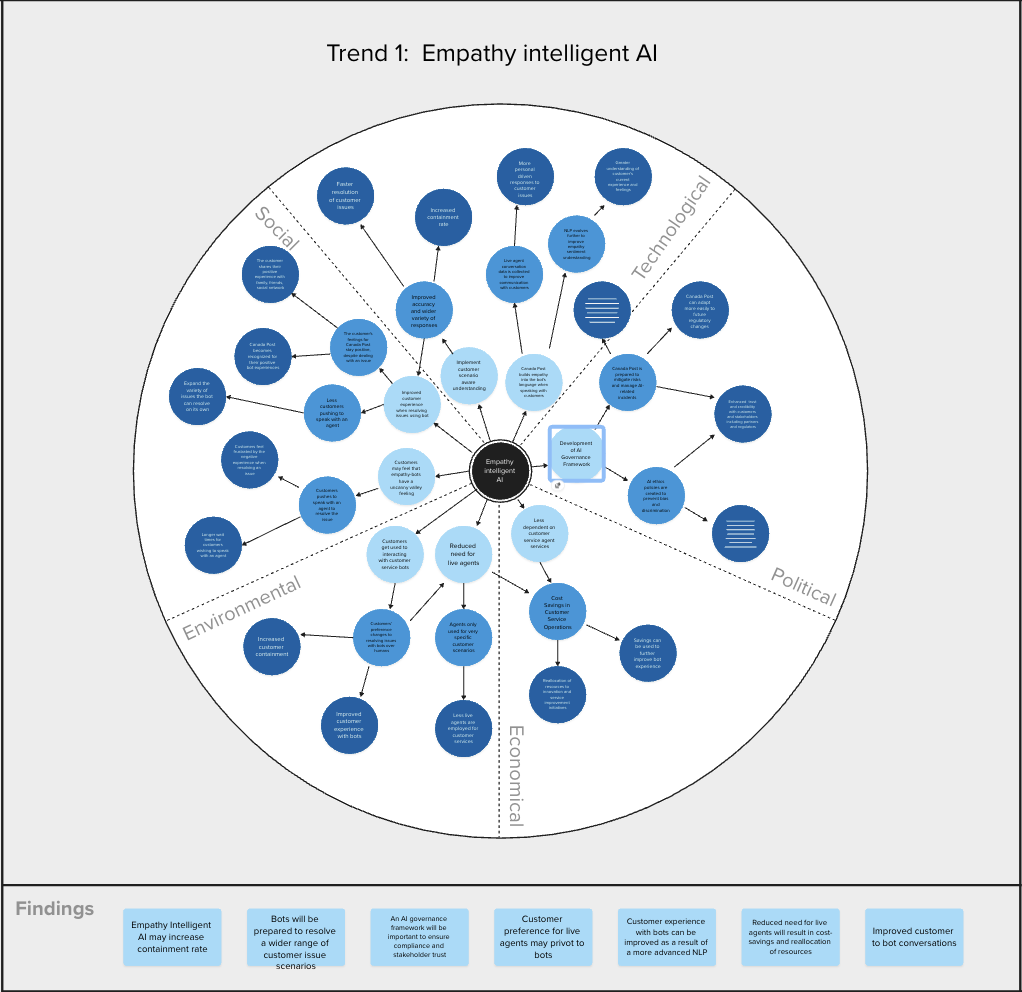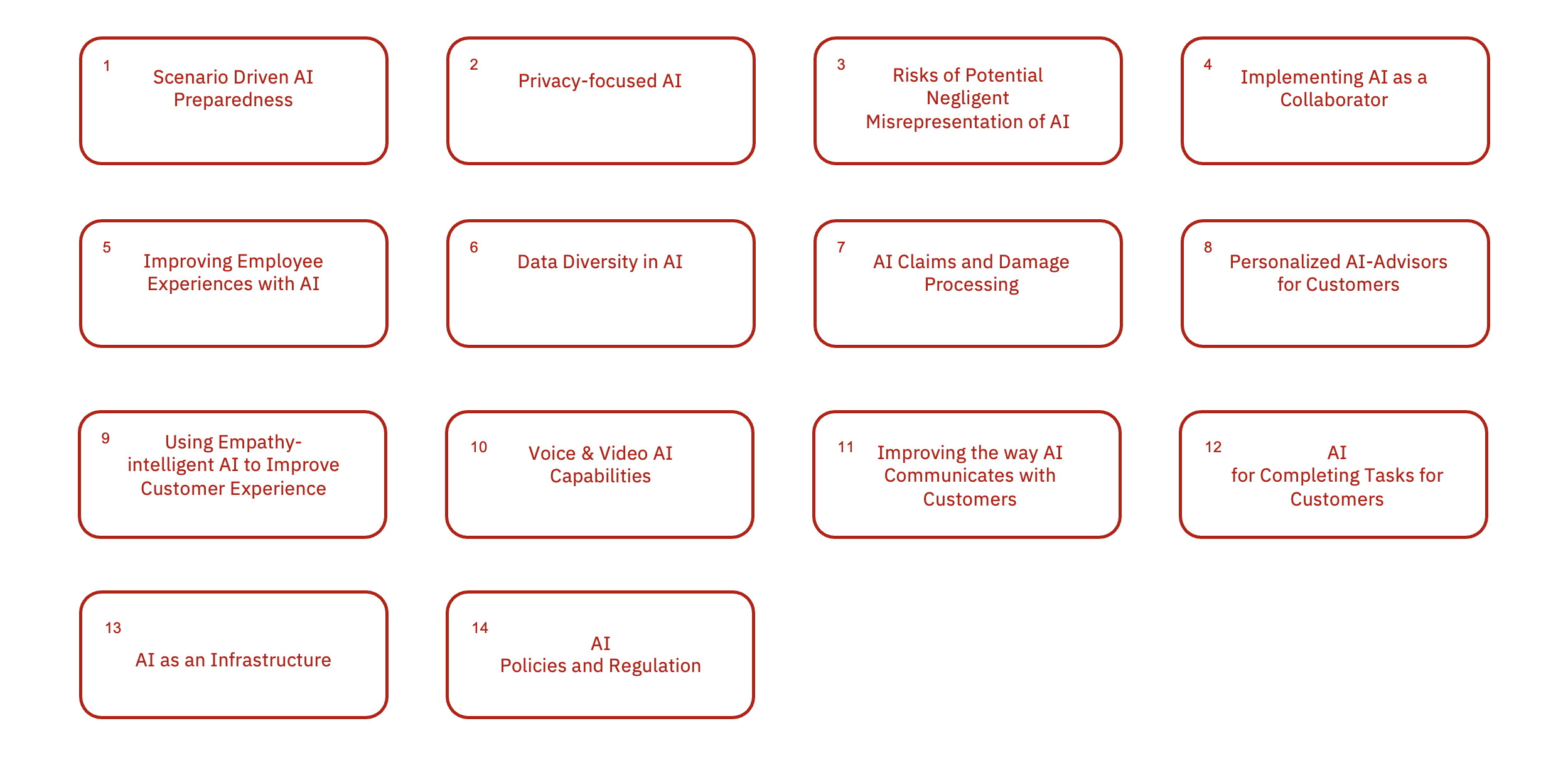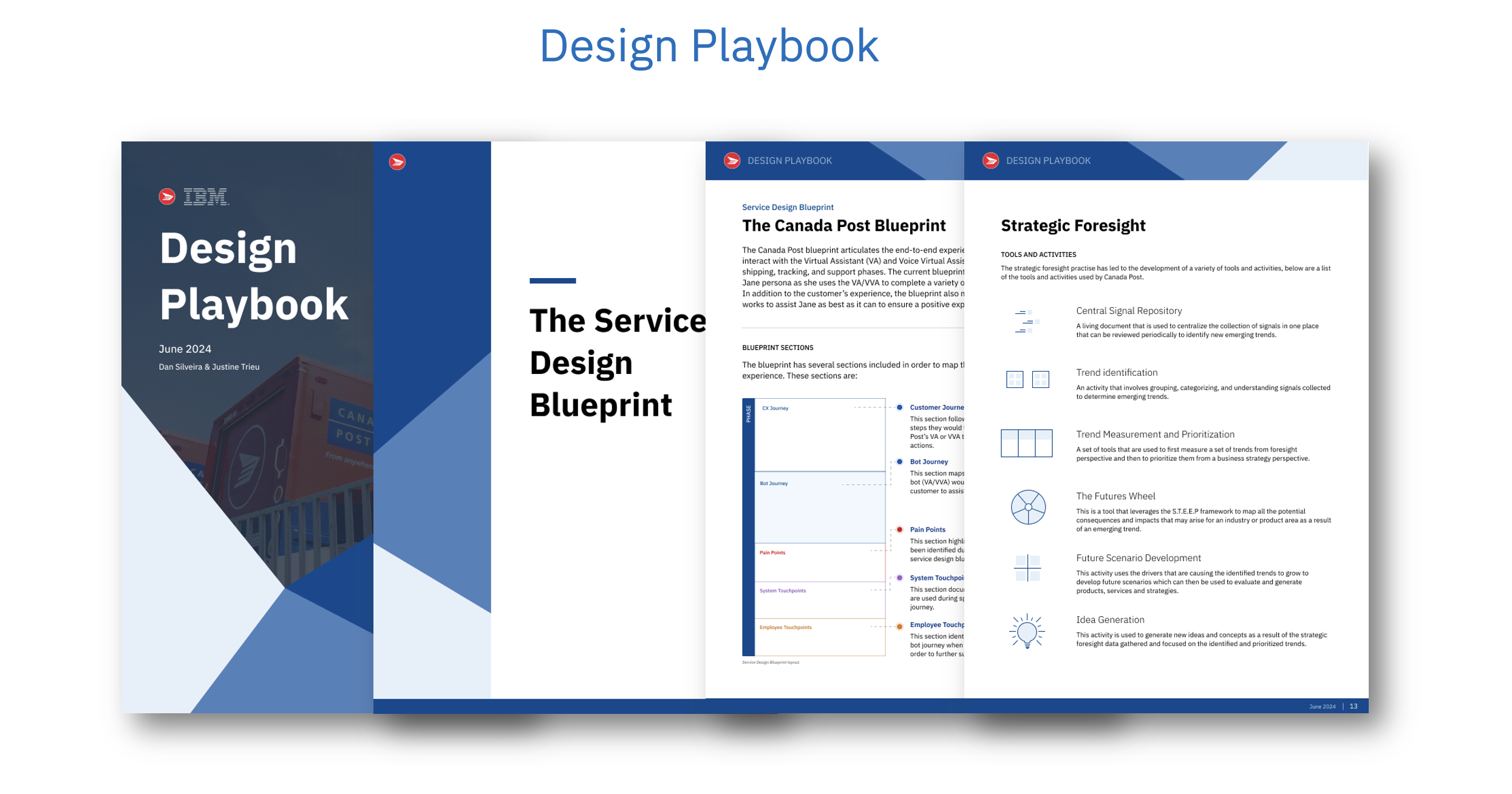Case Study: Canada Post
The Future of the Parcel Delivery Industry
Overview
Project Summary
Canada Post has an existing text-based virtual assistant and a voice-based virtual assistant which they have been maintaining for several years. Lacking an experience design team, Canada Post engaged IBM to map out the end-to-end user experience within a service design blueprint, in addition to conducting a strategic foresight initiative to inform their product roadmap. The strategic foresight initiative delivered a concrete sample of emerging trends as well as a report that identified risks and opportunities to guide their decision making.
Business Objectives
Optimize Virtual Assistant Experience: Map the end-to-end user journey for Canada Mail’s virtual assistants to enhance service efficiency and customer satisfaction.
Guide Strategic Innovation: Deliver a foresight-driven analysis to identify trends, risks, and opportunities to inform decision-making for Canada Mail’s virtual assistant product roadmap.
Result
Working with my team, I was able to deliver a full end-to-end service design blueprint for both their virtual assistant and voice virtual assistant while also delivering a comprehensive foresight report to guide their product decision-making.
Tools
Figma, Jira, Mural. Keynote
Role
As the service design and futurist lead, I was responsible for developing the scope, project activities, and roadmap for this project to deliver a Service Design Blueprint and Strategic Foresight Report in a condensed timeline. Additionally, as the design lead, I managed my design team to complete these deliverables in time for the client.
Strategic Foresight Process
Research Question
What is the Future of AI-enabled Customer Service in the Parcel Delivery Industry?
As Artificial Intelligence continues to evolve and transform over the next few years, it is imperative to understand the direction it is heading and the potential opportunities for Canada Post. By conducting a Horizon Scan, we will collect signals around the usage of AI in the parcel delivery industry to uncover emerging trends in the way it is being implemented to improve efficiencies and the overall customer experience.
To answer this research question, we followed the strategic foresight process I developed which includes four phases. These include: Trend Research, Explore & Extrapolate, Test & Validate, and Future Planning.
Central Signal Repository
We began by conducting a horizon scan which involves performing a literary review on relevant articles, research papers, white papers, blogs, and more to identify emerging signals that are relevant to our client’s product area. As we locate these signals, we document them within the Central Signal Repository that we establish for the client which briefly describes each identified signal. These are later used to uncover important trends that may impact our client’s product space in a positive or negative way.
Within one week of this month-long initiative, we were able to identify 14 emerging trends following the review and synthesis of the signals that were gathered in our central signal repository. All of these trends are growing with the AI and Parcel Delivery industry and are likely to impact Canada Post in some way in the future. For the purposes of this short project, we scoped our focus to just four of the most important trends which we determined using foresight and business measurement tools. Those trends were, Empathy-Intelligent AI, Task-Completing AI, Personalized AI Advisors, and AI Claims and Processing.
Trend Mapping & Impact Analysis
To explore how these trends may create risks or opportunities for Canada Post we perform a trend mapping and impact analysis activity called the Futures Wheel. This tool leverages five lenses (Social, Technological, Economical, Environmental, and Political) to extrapolate the causes and effects that may occur as a result of these trends existing within the parcel delivery industry or specifically within the area of virtual assistants and customer support.
Following the trend mapping we developed four future scenarios which we used to test potential ideas and concepts to determine their strengths and weaknesses. We also used the trends to develop strategies based on the risks and opportunities that were uncovered during this activity that Canada Post could use to begin taking steps to mitigate those risks or drive towards those potential opportunities.
The result of the foresight work led to the development of eight key solutions that were fleshed out and presented to the executive leadership which they could use to incorporate into their current product roadmap.
Impact
Following the completion of this initiative we were able to deliver the client the set of service design blueprints, our strategic foresight findings, and a playbook to guide the client in continuing to maintain the work that we built the foundation for. The client deemed the project a success, they were impressed with how much was done in such little time and were especially pleased with having their end-to-end experience mapped out in a service design blueprint and having a collection of new solutions that they could begin working on to evolve their virtual assistant further.






